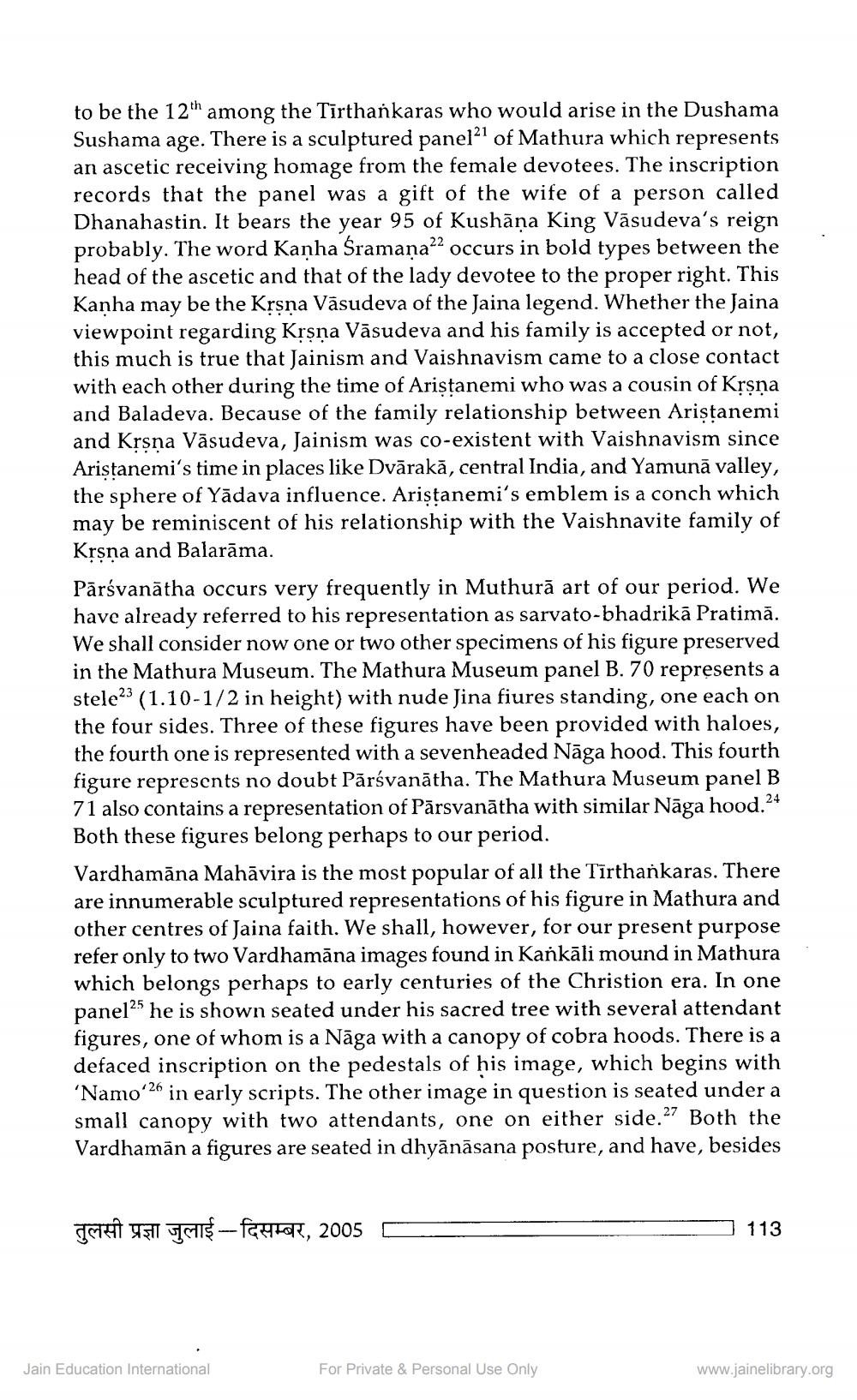________________
to be the 12th among the Tīrthankaras who would arise in the Dushama Sushama age. There is a sculptured panela of Mathura which represents an ascetic receiving homage from the female devotees. The inscription records that the panel was a gift of the wife of a person called Dhanahastin. It bears the year 95 of Kushāņa King Vāsudeva's reign probably. The word Kanha Sramana 2 occurs in bold types between the head of the ascetic and that of the lady devotee to the proper right. This Kanha may be the Krsna Vāsudeva of the Jaina legend. Whether the Jaina viewpoint regarding Krsna Vāsudeva and his family is accepted or not, this much is true that Jainism and Vaishnavism came to a close contact with each other during the time of Aristanemi who was a cousin of Krsna and Baladeva. Because of the family relationship between Aristanemi and Krsna Vāsudeva, Jainism was co-existent with Vaishnavism since Aristanemi's time in places like Dvārakā, central India, and Yamunā valley, the sphere of Yādava influence. Aristanemi's emblem is a conch which may be reminiscent of his relationship with the Vaishnavite family of Krşņa and Balarama. Pārsvanātha occurs very frequently in Muthurā art of our period. We have already referred to his representation as sarvato-bhadrikā Pratimă. We shall consider now one or two other specimens of his figure preserved in the Mathura Museum. The Mathura Museum panel B. 70 represents a stele23 (1.10-1/2 in height) with nude Jina fiures standing, one each on the four sides. Three of these figures have been provided with haloes, the fourth one is represented with a sevenheaded Nāga hood. This fourth figure represents no doubt Pārsvanātha. The Mathura Museum panel B 71 also contains a representation of Pārsvanātha with similar Nāga hood.24 Both these figures belong perhaps to our period. Vardhamāna Mahāvira is the most popular of all the Tīrthankaras. There are innumerable sculptured representations of his figure in Mathura and other centres of Jaina faith. We shall, however, for our present purpose refer only to two Vardhamāna images found in Kankāli mound in Mathura which belongs perhaps to early centuries of the Christion era. In one panel25 he is shown seated under his sacred tree with several attendant figures, one of whom is a Nāga with a canopy of cobra hoods. There is a defaced inscription on the pedestals of his image, which begins with 'Namo 26 in early scripts. The other image in question is seated under a small canopy with two attendants, one on either side. Both the Vardhamān a figures are seated in dhyānāsana posture, and have, besides
THE WENI INIfayar, 2005
113
Jain Education International
For Private & Personal Use Only
www.jainelibrary.org




